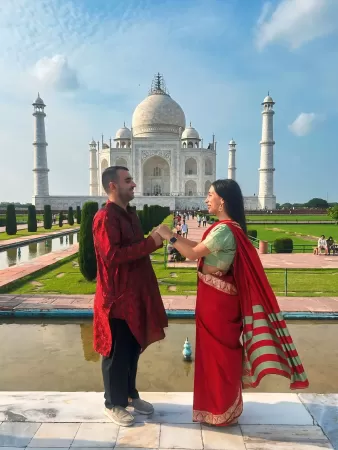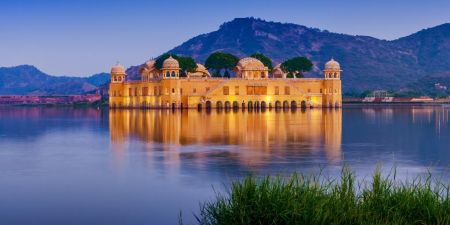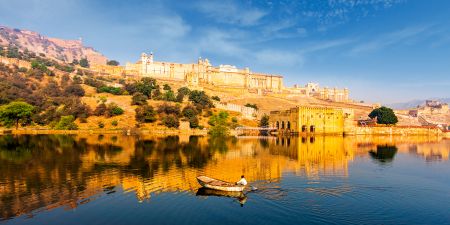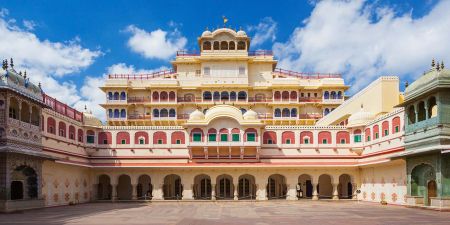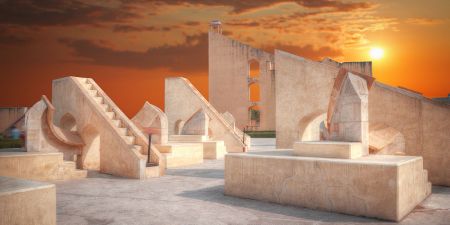Amber Fort
Amber Fort, also referred to as the Amber Palace, is a major tourist attraction in Jaipur due to its sublime appearance and geographical advantages. Read More!
.jpg)
Jaipur, also known as the Pink City, is one of the most charming cities in the world. With its distinct royal features and a city painted pink to denote warmth and hospitality, Jaipur offers a stunning destination for travel-enthusiasts in the northern state of Rajasthan in India. Trips to India are extremely popular amongst tourists from all around the world, and Jaipur has long been considered one of the best destinations to visit. The Pink City is home to an incredible number of architectural wonders; and one of the most famous ones is the Amber Fort, located in the outskirts of Jaipur.
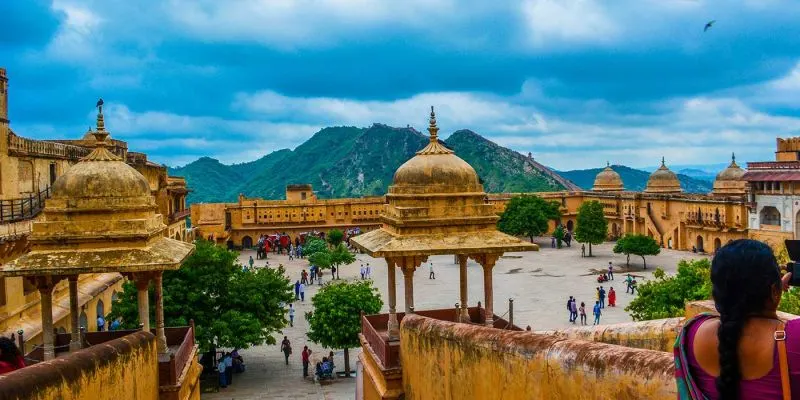
About Amber Fort
The Amber Fort, also known as the Amer Fort, is a remarkable blend of different cultures into one magnificent architectural style, with contributions from the Rajputs and the Mughals. Its earliest origins date back to the 11th century, post which multiple constructions were carried out on the structure, which was in ruins. These constructions took place across many centuries and were undertaken under the rule of different kingdoms, which is visible in the beautiful convergence of different architectural designs.
Structure
The fort was constructed using sandstone and marble, making it impenetrable, and it consists of four courtyards, palaces, halls and gardens. Each part of the gorgeous fort is historically significant, with different areas for different purposes. For instance, the main courtyard was where the king’s soldiers would assemble, before embarking on parades. There are numerous other reminders of the majestic kingdoms that existed and are represented in the ornamental creation of gardens, the king’s chamber, and the halls for public and private audiences.
Customize Your Dream Vacation!
Get in touch with our local experts for an unforgettable journey.
Plan Your TripThe fort consists of four different sections. Each of the sections has its own gate and courtyard. The first gate is named Suraj Pol, which means Sun Gate. It is named like that because the gate faces the sun and witness the sunrise every morning. This gate is an entrance to the first courtyard called Jalebi Chowk. The soldiers gathered and celebrated their victory in this courtyard, during the time the fort was ruled by Rajputs.
The second courtyard is featured by the Diwan-i-Am hall, which has latticed galleries, and the painted gate-away Ganesh Pol. The hall is led to by a set of stairs. The Amber Fort’s enterance is through the Dil-e-Aaram Garden, which represents the traditional Mughal style. There is a small temple of Goddess Sila Devi. The temple is characterized by massive silver doors.
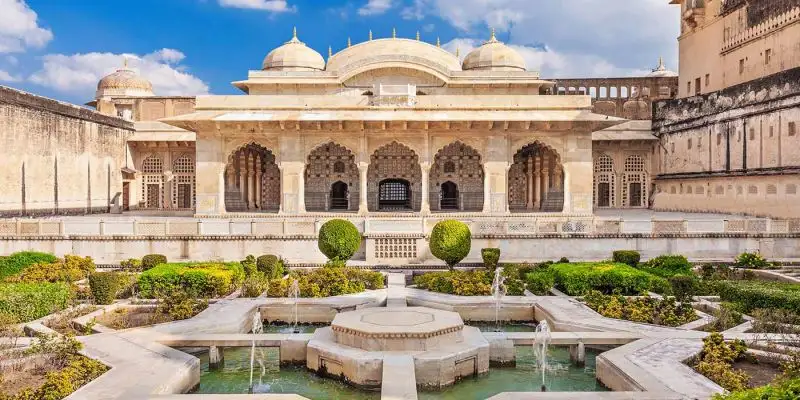
As for the third courtyard, there are two impressive buildings, situated opposite to each other. The first building, Jai Mandir or Sheesh Mahal (palace of mirrors), is situated on the left. They celebrated victories and other occasions in this building. The other building opposite to Jai Mandir is called Sukh Mahal (Hall of Pleasure). This building was used by the royal family to spend some leisure time alone. The fort built by Raja Man Singh I, is located toward the southern region of the courtyard. The exit of this fort directs to the town of Amer.
At last, the fourth courtyard is an interesting one. This courtyard was used as the residence of the royal women, including the queens, queen mother, and mistresses. This part was sheltered, as the kings visited the queens or mistresses without being seen by anyone.
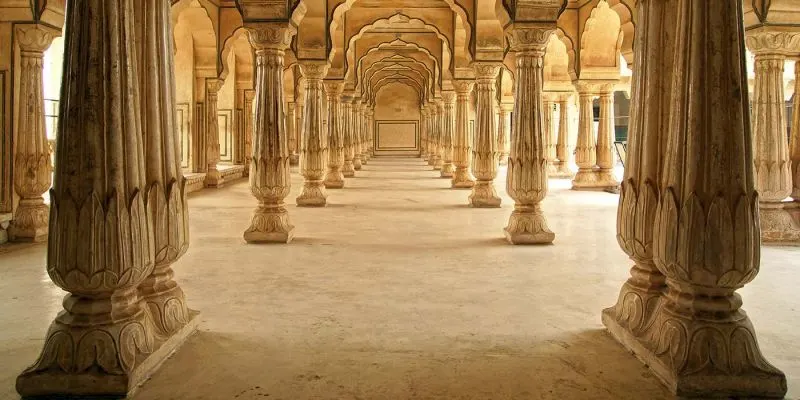
The most exquisite part of the fort open to visitors today is the Diwan-e-Khas, which used to be a hall for private audiences. It can be reached through an ornate gate called the Ganesh Pol, featuring sculptures of the Hindu, elephant-headed God. Upon entering the Diwan-e-Khas, you are faced with walls of intricately designed mirror-art, that look too gorgeous to be true! The hall also has an ‘upper’ portion, namely the Jas Mandir, which is decorated ornately with delicate floral designs on glass. Across the building that has the Diwan-e-Khas, is another beautiful building, known as the ‘Sukh Nivas’, which was used by the King for his pleasure and relaxation. You can also find a women’s quarter in the palace of Man Singh, a Rajput king, home to the king’s multiple wives.
Getting There
The full glory of this fort can only truly be experienced upon seeing it yourself, and there are different ways to get to the fort. Taxis, rickshaws and buses ply frequently to the fort; and if you are on a budget, the bus is the cheapest option. You can hop onto a bus near the Hawa Mahal, which is located in the older part of the city. It drops you off at the foot of the hill, atop which the fort is situated, and you can walk up the hill, take a vehicle, or even ride an elephant to get to the top.
When to visit?
The fort is open for visitors from 8:30 AM through 5:30 PM every day and then reopens at 6:30 PM for a phenomenal sound and light show. The tourist season is from October to February, as the city of Jaipur is extremely hot during the rest of the year owing to its proximity to a desert. However, the fort is accessible all through the year.
Where to stay?
There are a number of hotels situated just a few kilometres from the fort, and are renowned for their warm hospitality. Some of these hotels are forts that were converted into hotels, and they too boast of a rich cultural experience, like the rest of the city. You can also choose to stay in the city, so as to be more centrally located.
What to do?
1- Watch the sound and light show in the evening, which showcases the entire history of the monument beautifully! The show is a ticketed event, and the timings of the English version of the show are:
- October to February (Tourist Season)
6:30 PM
- March to April (Summer Season)
7:00 PM
- May to September (Monsoon Season)
7:30 PM
2- Try delicious Rajasthani cuisine at 1135 AD, a fine-dining restaurant within the fort, situated on the 2nd level of the primary courtyard (Jal Chowk)
3- Visit the Jaigarh fort, connected to the Amer fort by an open-air passage.
The heritage city of Jaipur has a lot to offer and the Amer fort is just one of the awe-inspiring sights to see in this city. If you have ever visited this mind-blowing Indian city, we would love to hear about your experiences in the comments below, and any recommendations or advice you would like to give to other travellers are welcome!

